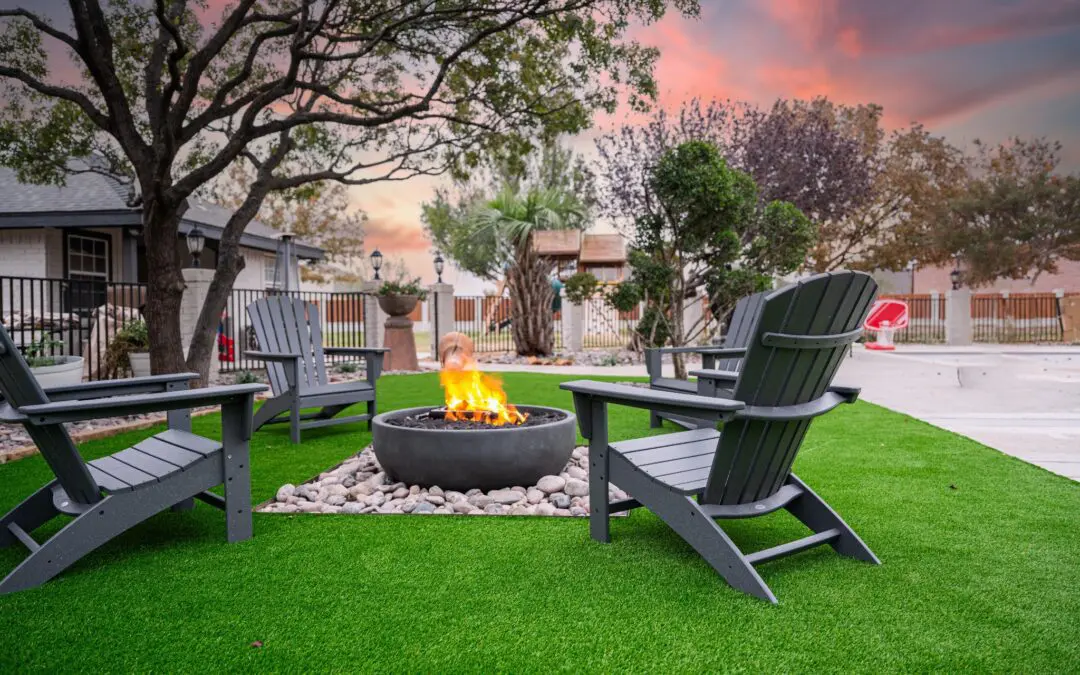The great lawn debate is here: Grass vs Artificial Turf. As a homeowner, you might find yourself torn between wanting a lush, green lawn that’s the envy of the neighborhood and enjoying your weekends without being tied to a lawnmower. Let’s dive into the pros and cons of both options to help you make the best choice for your lawn.
Understanding the Basics
What is Natural Grass?
Natural grass is a living organism that requires consistent care, including watering, mowing, and fertilizing. It brings a refreshing splash of green to your environment and varies by region, with some types thriving in shade while others prefer sunny spots.
What is Artificial Turf?
Artificial turf is a synthetic surface designed to mimic the look and feel of real grass. Made from synthetic fibers, it aims to provide a lush appearance without the need for watering or mowing. While it offers low maintenance, it lacks the environmental benefits of living grass.
The Pros of Natural Grass
Natural grass has a range of benefits that can enhance your property and the environment.
Environmental Benefits
Natural grass improves air quality by capturing dust and pollutants. It cools the environment through evapotranspiration and supports biodiversity by providing habitats for insects and birds. Plus, it helps prevent erosion and improves soil health.
Health and Comfort
Walking on natural grass is a comforting experience. It’s cooler and softer, perfect for barefoot strolls. Additionally, caring for your lawn can be a relaxing hobby that boosts your mood. Grass also cushions your joints, making it kinder during activities.
Aesthetics and Property Value
Nothing enhances your property’s aesthetics like a vibrant, green lawn. A well-maintained grass lawn can significantly improve your property value, as potential buyers often see it as a sign of care and attention.
The Cons of Natural Grass
While natural grass has many advantages, it also comes with challenges.
Maintenance Challenges
Maintaining natural grass requires regular effort. You’ll need to mow, water, and fertilize, which can be time-consuming. Additionally, weeds and pests can be a constant battle, requiring vigilance and control measures.
Environmental Drawbacks
Natural grass can use a lot of water, especially in dry spells. Chemical fertilizers and pesticides can lead to runoff and pollution, impacting local waterways. It may also attract pests or diseases, necessitating frequent interventions.
Cost Implications
The costs of maintaining natural grass can add up. From watering and fertilization to equipment purchases and professional services, it’s important to budget for these ongoing commitments.
The Pros of Artificial Turf
Artificial turf offers several enticing benefits that appeal to busy homeowners.
Low Maintenance
One of the standout features of artificial turf is its minimal maintenance requirements. Once installed, it eliminates the need for mowing and watering, saving you time and water. No more fertilizing or pesticide schedules mean less chemical use, making it an eco-friendly option.
Durability and Usage
Artificial turf can withstand heavy foot traffic without showing wear and tear, making it ideal for families with kids and pets. It’s resilient against various weather conditions, providing year-round green without the hassle.
Safety Considerations
Artificial turf can offer cushioning that helps reduce injury risks from falls, making it a popular choice for play areas. It also reduces exposure to allergens, providing comfort for those sensitive to grass pollen.
The Cons of Artificial Turf
Despite its many benefits, artificial turf also has some drawbacks to consider.
Heat Absorption Issues
Artificial turf can get much hotter than natural grass on sunny days, which may make it uncomfortable to walk on. This heat retention could deter outdoor activities, especially in warmer climates, so it’s important to consider your local weather.
Environmental Concerns
While it doesn’t require water, the production and disposal of artificial turf can contribute to environmental concerns. It’s essential to weigh these factors when deciding.
Conclusion: Making the Right Choice
When it comes to Grass vs Artificial Turf, both options have their pros and cons. Natural grass offers environmental benefits and enhances property value but requires more maintenance. Artificial turf is low-maintenance and durable, but it comes with heat absorption issues and environmental considerations.
Ultimately, the best choice depends on your lifestyle, preferences, and the specific needs of your lawn. If you’re looking for expert advice tailored to your situation, feel free to reach out!
Contact Eternal Tree & Landscape
For personalized landscaping solutions in Midland, TX, contact us at Eternal Tree & Landscape:
Phone: 432-689-8186
Email: office@etlmidland.com
Website: www.etlmidland.com
We’re here to help you create the lawn of your dreams!


Recent Comments